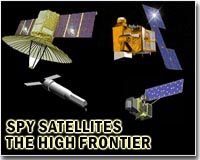| . |  |
. |
Tehran (UPI) Nov 9, 2009 Iran is preparing to launch its second indigenous communications satellite aboard a Safir-2 (Ambassador) booster rocket, an event that will test the country's ballistic missile capabilities. And, if it's successful, it could impact significantly on U.S.-led negotiations with Tehran over its nuclear ambitions by demonstrating the Iranians' growing mastery of missile technology. Satellite launch vehicles such as the two-stage Safir-2, believed to be a modified Shehab-3 intermediate-range ballistic missile, are generally considered to have a potential application as an intercontinental ballistic missile. Ten months ago Iran successfully launched the Omid 1 (Hope) satellite into orbit atop a 72-foot Safir from the Semnan Space Research Center in the Dasht-e-Kavir desert south of Tehran after at least one failure. The new satellite, known as Mesbah (Lantern), will weigh 132 pounds, 10 times more than Omid, which burned up on re-entering Earth's atmosphere in April. Jane's Intelligence Digest reported at the time that the use of a two-stage launch vehicle was a "noteworthy technical achievement." "Tehran has now established its status as having the most advanced space, missile and nuclear programs in the Muslim Middle East, confirming its technical superiority over its Arab allies," it commented. Many of the technological building blocks involved in the booster rockets like the Safir-2 are the same as those needed to develop long-range ballistic missiles. This was the pattern of early U.S. and Russian missile development in the 1950s and 60s. According to Western sources, the Iranians have built two Mesbahs in cooperation with Italy's Carlo Gavazzi Space company under an $11.3 million program. The first Mesbah was destroyed in a 2005 launch mishap. The satellite program and a slew of recent test-firings of Shehab-3 and the more sophisticated, solid-fuel Sajjil-2 ballistic missiles indicate that Iran's scientists and engineers have made significant technological advances in the last two or three years. The concerns of the United States and Israel, along with European and Arab states, about Iran's missile capabilities were heightened earlier this month with reports that the U.N. nuclear watchdog believed Iranian scientists had experimented with an advanced nuclear warhead design. The dossier compiled by the Vienna-based International Atomic Energy Agency was described as "breathtaking" by Western experts. "It's remarkable that, before perfecting step one, they're going straight to step four or five," said James Acton, a British nuclear arms expert at the Carnegie Endowment for International Peace. "To start with more sophisticated designs speaks of a level of technical ambition that is surprising." U.S. surveillance satellites and aircraft have been monitoring the Semnan facility since Tehran indicated in the summer that another satellite launch was in the works. No target date was announced, but state-run television has been broadcasting footage of booster tests in hangars at the Semnan facility for several weeks. Following the Omid launch on Feb. 3, the telecommunications minister, Mohammad Soleimani, announced that Iran was manufacturing four more satellites. Iran has also announced that it plans to start sending research animals into space in 2010-11, first on Shahabs deployed as sounding rockets that can reach an altitude of 100 miles. This would be followed by orbital missions using animals as a prelude to a manned Islamic space programs by about 2021, according to Soleimani's successor, Raza Taiq-pour. According to one U.S. analysis of the recent advances in Iran's missile technology, a successful Safir-2 mission "could raise concerns in Congress among Republicans who believe President Obama acted wrongly by reducing Missile Defense Agency facilities in Poland and the Czech Republic against Iranian Safir-type missiles that could eventually have the capability to strike the United States directly."
Share This Article With Planet Earth
Related Links Military Space News at SpaceWar.com
 South Korea eyeing four spy satellites
South Korea eyeing four spy satellitesSeoul (UPI) Oct 28, 2009 South Korea is eyeing the purchase of at least four spy satellites to monitor North Korea. Local reports citing an unnamed Defense Ministry official said the purchase would extend over a 10-year period. The South Korean official said Seoul was considering the option but no official decision had been taken. He did not elaborate. The news came hot on the heels of local media ... read more |
|
| The content herein, unless otherwise known to be public domain, are Copyright 1995-2009 - SpaceDaily. AFP and UPI Wire Stories are copyright Agence France-Presse and United Press International. ESA Portal Reports are copyright European Space Agency. All NASA sourced material is public domain. Additional copyrights may apply in whole or part to other bona fide parties. Advertising does not imply endorsement,agreement or approval of any opinions, statements or information provided by SpaceDaily on any Web page published or hosted by SpaceDaily. Privacy Statement |